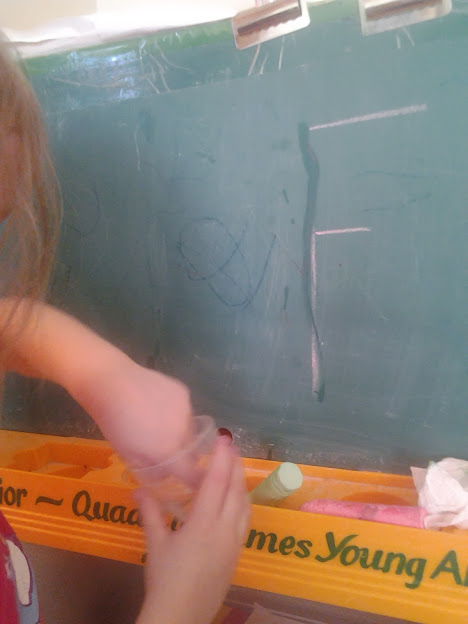Now this little incident might not be considered "bullying" but the fact is, children in child care and preschool classrooms come across behavior like this all the time. For some children that exhibit this type of behavior, it is because of there current developmental level. Children at a younger age, do not have the ability to feel emphatic, so when using "mean hands" or "mean words" etc, they may not understand what they are doing is indeed hurting others. For other children, they may not have the verbal communication skills and become physical when frustrated. Unfortunately, for other children, its the behavior they see in their home. Plus, there could be many other reasons a child acts out in such a way.
When it comes to dealing with the behavior, their are many paths you can take, but first I want to focus on how to work with the children that are the victims of "bullies" or the children that are the witnesses. We need to teach our children at a young age to be clear and confident when speaking up for themselves and for a friend. We also need to teach children that we are there for them and that it is always okay to seek the help of a familiar adult. For the children that are not as verbal in my program, we use sign language. I use sign language throughout the day, so that all the children can understand it. Here are some signs that may be a good start
"Stop"
"Hurt/Pain"
It is also important to model for the children what a "clear and confident" voice really means. If, I simply just tell the children to look the child in the face and speak loudly, I can imagine the children screaming at each other, which could turn into a form of verbal bullying, which is not the goal. When modeling, I make sure I am at the child's level and I keep my voice calm. Throughout the day, we practice "I" statements. For example, "I don't like it when you hit me, next time use your words."
Another way to deal with the behavior, is to be proactive. Know what will make the children upset, before it happens and have a plan. The biggest problem I have in my child care is play time. The children all seem to want the same toys at the same time. Of course an easy but expensive solution would be to buy more of the popular toys, but if I want to prepare the children for the real world, in my eyes, this would be a disservice to them. That is why we have the fair ways to play chart. If, I can see a child wants something another child has, I simply say, "lets go to the chart."
 | |||||||||||
| "Share, Trade, Wait and Take Turns, Get a Timer, Play Together, and Ask Nicely." |
When using the chart, the child will point to the solution they would like to try and we will walk over to the other child together to try the solution they came up with. For example, if Leia is playing with the shopping cart and Annabelle decides she wants to try to trade, she can offer Leia the vacuum. Leia doesn't have to accept the trade and if that happens, Annabelle and I will just try another solution.
Of course, every topic can be tied in with literacy. Once a week, I read a story that focuses on social emotional development. A great story is, "Llama Llama and the Bully Goat." This story, not only shows that bullying can be physical, verbal, and the act of making someone feel left out, but it also shows Llama standing up for himself, and perhaps most importantly, that when a "bully" is at a young age, even they deserve a second chance. :)















































